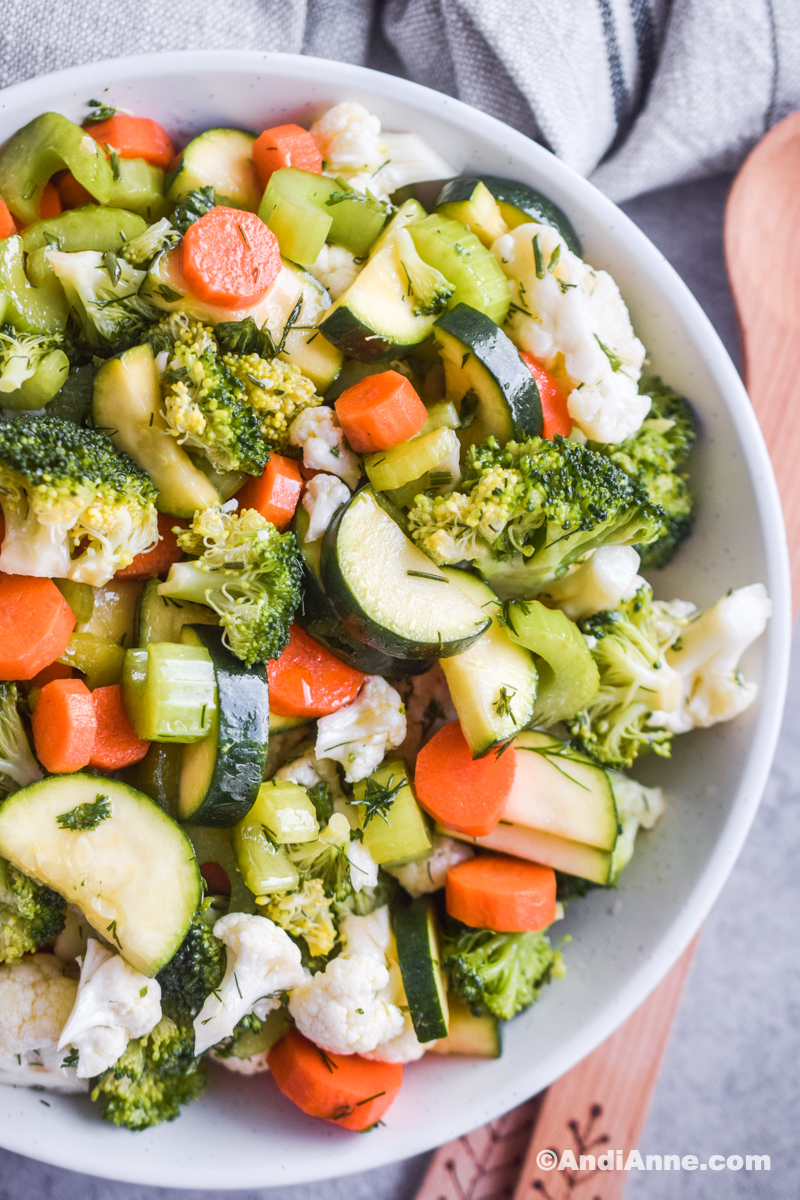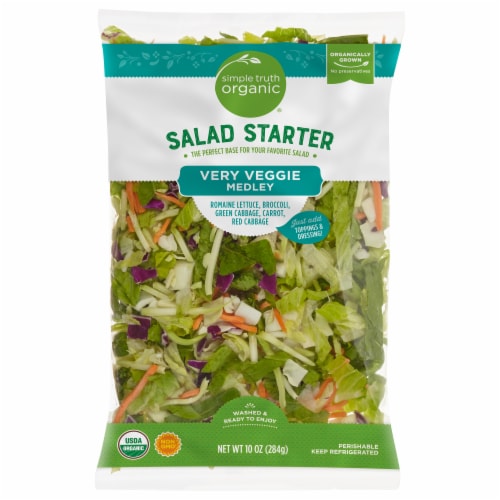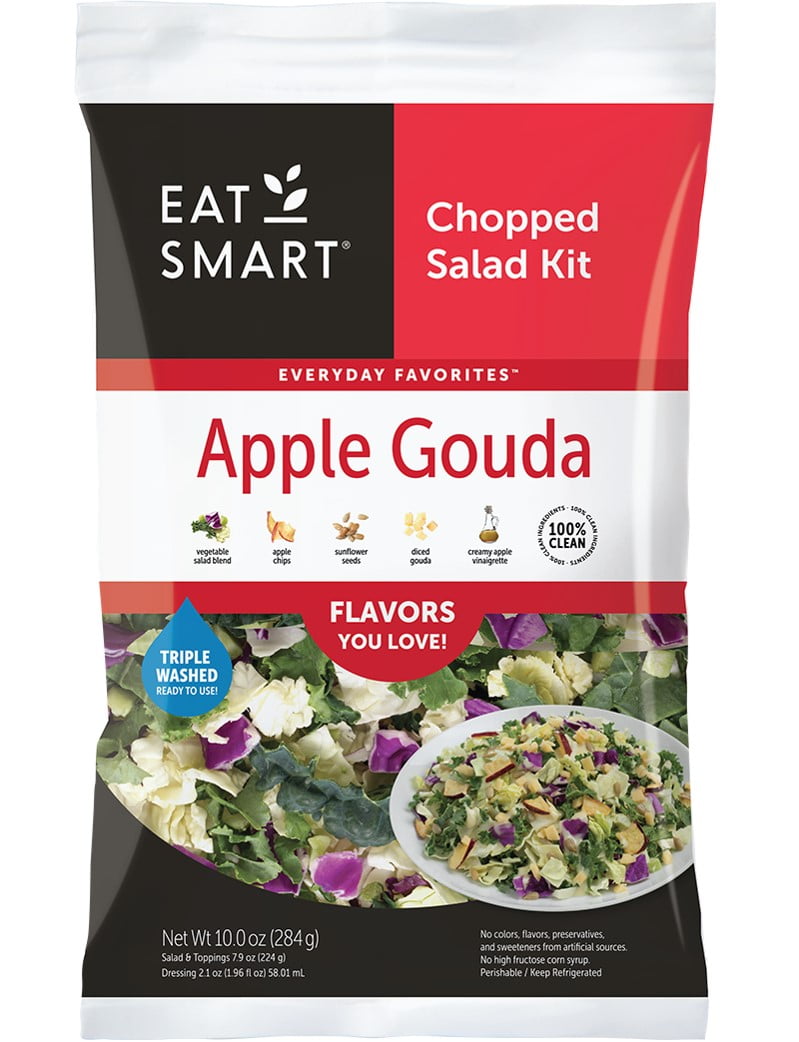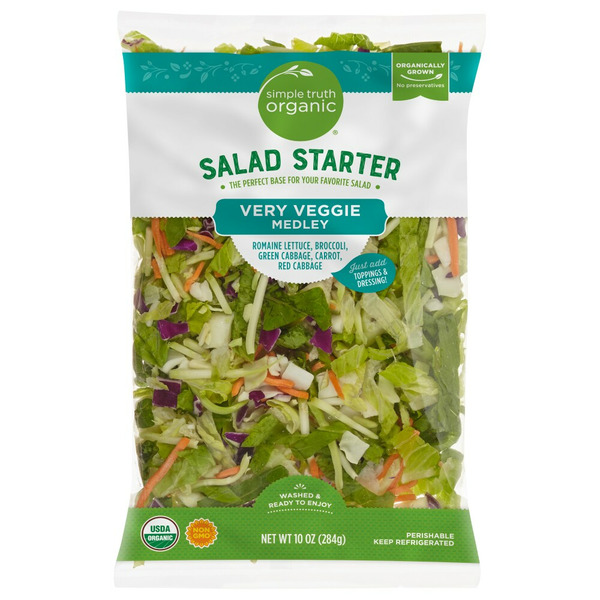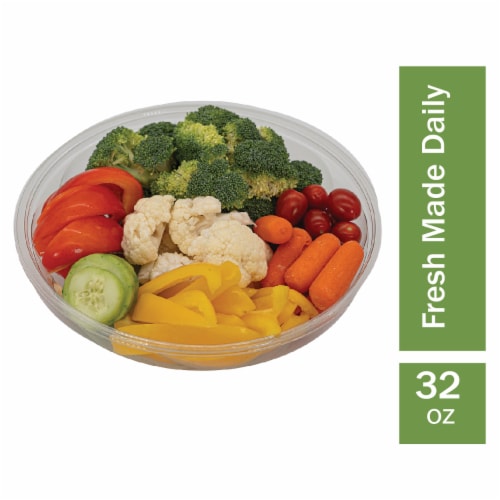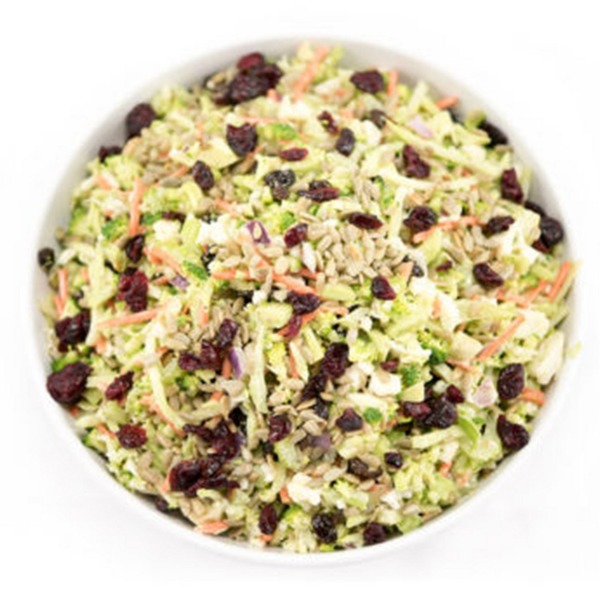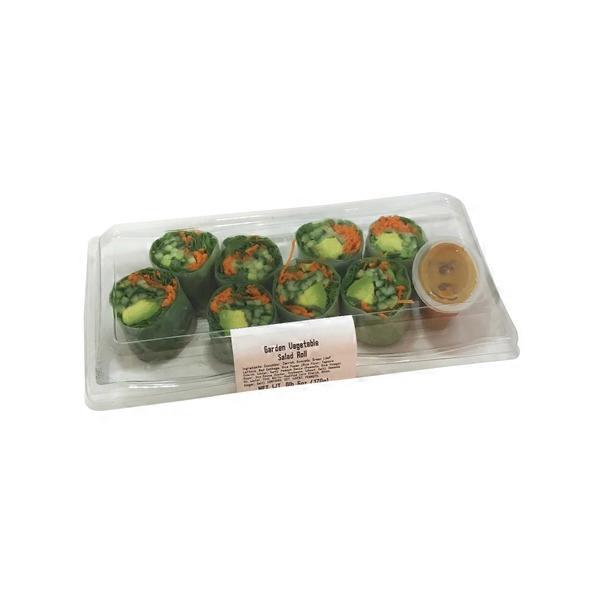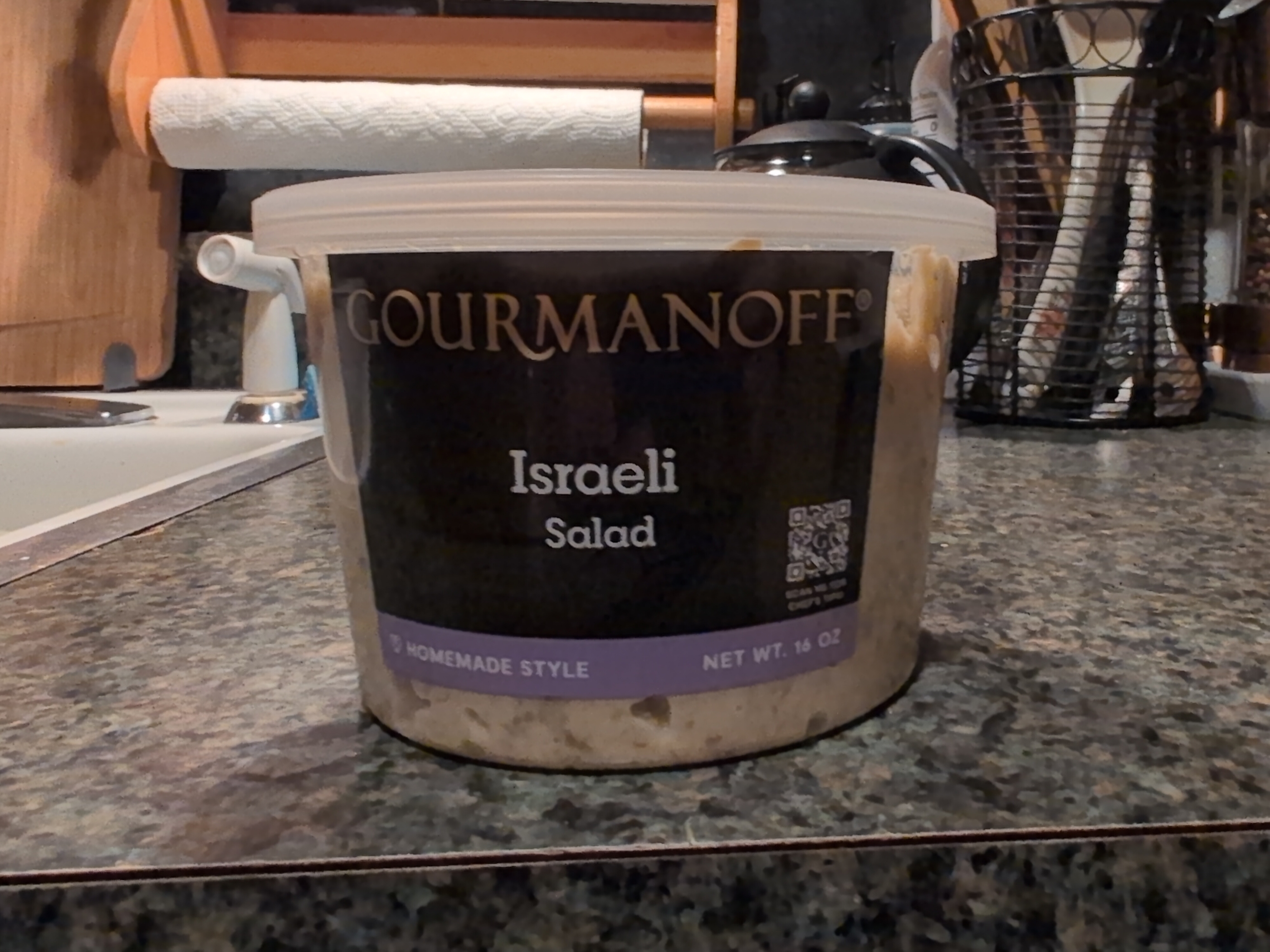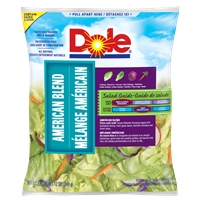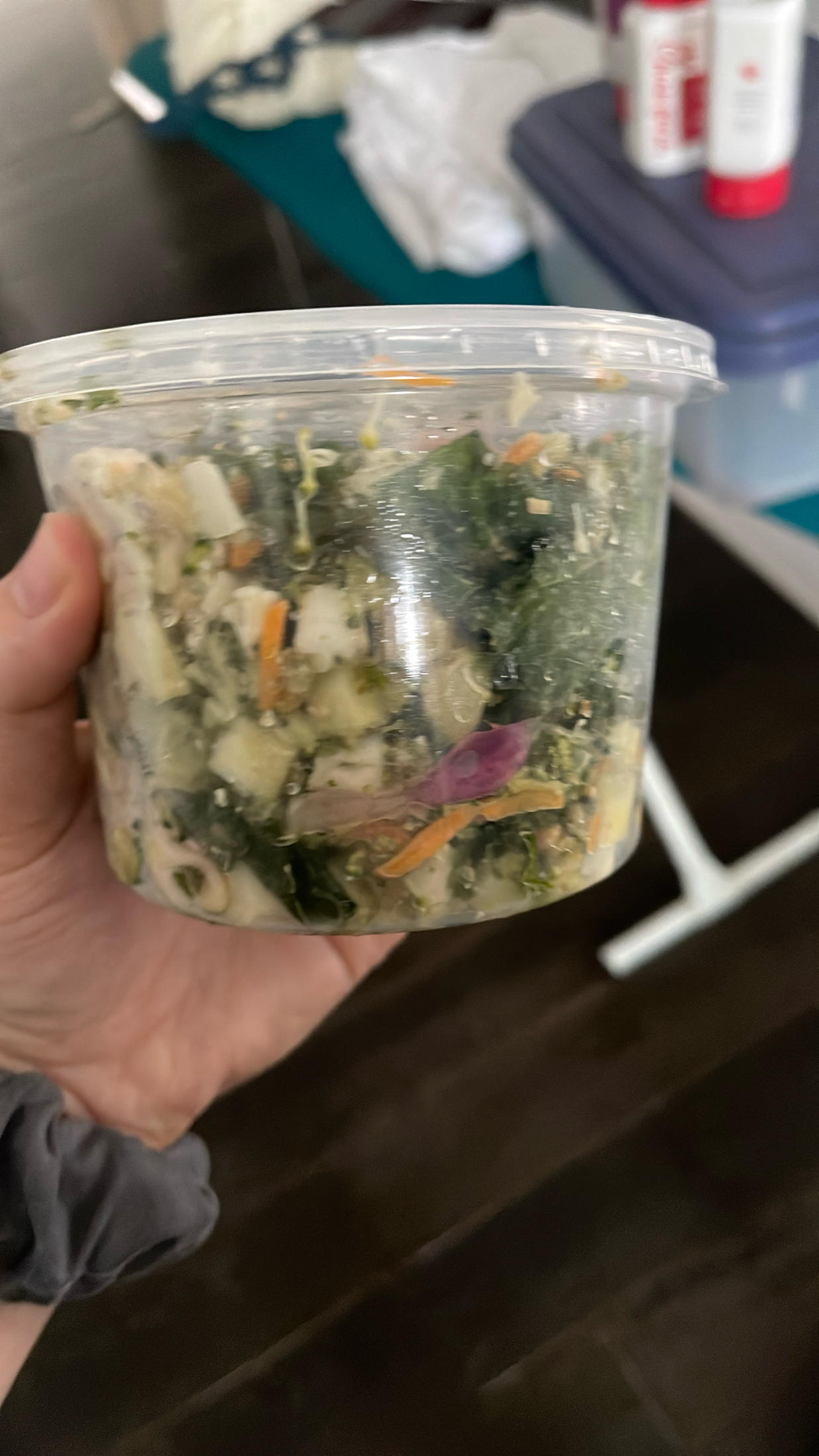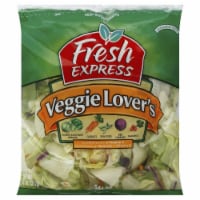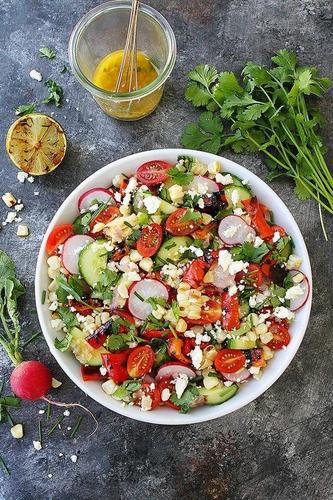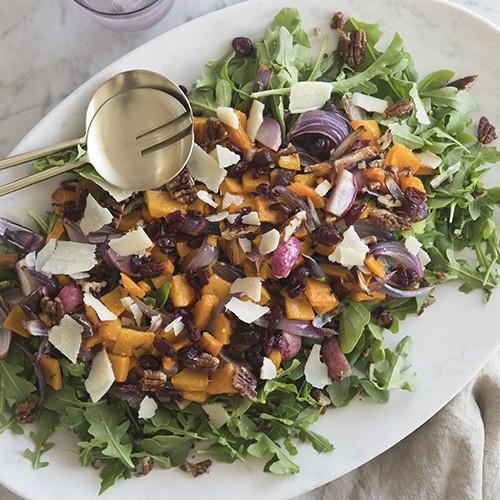Vegetable Salad
A Vegetable Salad is an easy-to-make, nutritious dish, versatile enough to be served as a main course or as a side dish. It's composed primarily of assorted vegetables that have been chopped and mixed together. Depending on the recipe, these can include greens like lettuce or spinach, veggies like tomatoes, cucumbers or cabbage, and even crunchy add-ons like nuts or croutons.
Vegetable Salads are excellent sources of dietary fiber and essential vitamins and minerals. Best of all, they are fully customizable to cater to different taste preferences and dietary needs, making them a popular choice for health-conscious individuals and vegetarians.
58%
CARBS
19%
FAT
23%
PROTEIN
Featured Articles
47 Vegetable Salad Products
Simple Truth Organic® Very Veggie Medley Salad Starter
Eat Smart Vegetable Salad Kit, Apple Gouda
Simple Truth Organic Very Veggie Medley Salad Starter
JFE Signature Vegetable Bowl
Crunchy Vegetable Salad
Whole Foods Market Garden Vegetable Salad Roll
Israeli Salad
Very Veggie Romaine, Iceberg, Carrots, Pea Pods, Red Cabbage, Radishes, Very Veggie
Super Veggie Salad
Fresh Express Salad Greens Veggie Lovers
16 Recipes for Vegetable Salad
522
Winter Vegetable Salad with Butternut Squash, Brussels Sprouts, and Beets
3
Summer Vegetable Salad
1
Mixed Vegetable Salad with Lime Dressing
44
Rainbow Veggie Salad with Lemon Vinaigrette
2
Roasted Vegetable Salad
39
Overnight Vegetable Salad
Marinated Vegetable Salad
9
Grilled Vegetable Salad with Feta
Vegetable Salad FAQ
What is a vegetable salad?
What ingredients can be used in a vegetable salad?
How do I prepare the vegetables for the salad?
What dressing can I use for a vegetable salad?
Can I substitute ingredients in the salad?
How can I adjust the texture of the salad?
What common mistakes should I avoid when making a vegetable salad?
How should I store leftover vegetable salad?
Expiration & Storage Tips
When does Vegetable Salad expire?
An unopened, pre-packaged vegetable salad has a variance in expiration date, typically ranging from 3-5 days beyond the printed date if kept in the fridge, so keep a close eye on the use-by date on the packaging. Once opened, the salad should ideally be eaten within 2 days, even if it's refrigerated, to enjoy its freshness and nutrition. Homemade vegetable salads without dressing can last in the refrigerator for about 3-4 days. If you've added a dressing, then it's best to consume it within 1-2 days. Freezing vegetable salads is not generally recommended as the texture of the vegetables can become mushy and unappetizing when defrosted.
How do you tell if Vegetable Salad is bad?
Look out for changes in smell, texture, and color. A bad salad often develops a slimy or mushy texture and starts to smell sour or rotten - trust your nose, if it smells off, it usually is. Another sure sign of a spoiled salad is the appearance of mold. If you notice any discoloration, especially black, white or green fuzz, discard the salad immediately.
Tips for storing Vegetable Salad to extend shelf life
• Always store your vegetable salad in the refrigerator, ideally at a temperature between 35 and 38 degrees Fahrenheit.
• If it's homemade, store in an airtight container to keep it fresh and crisp for longer.
• Don't dress the salad until you're ready to eat it. This makes the veggies last longer as they won't be soaked in dressing and lose their crunchy texture.
• For pre-packaged salads, once opened, if not consumed fully, seal the package with a food clip or transfer the remaining salad to a reusable airtight container.
• Storing salad in a glass container, rather than plastic, can also help keep it fresh for longer, as glass does not absorb smell or allow bacteria to grow.
• A handy hack to keep salad crisp is to place a paper towel in the salad container. The towel absorbs excess moisture, which keeps your salad fresh for a longer period.
Health Info
Macros
17g
CARBS
5g
FAT
6g
PROTEIN
Allowed on these diets
LOW FAT
HIGH CALCIUM
VEGETARIAN
MEDITERRANEAN
LACTOSE FREE
GLUTEN FREE

